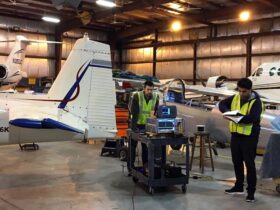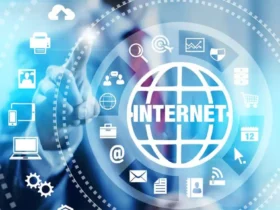The Internet of Things (IoT) is a broad term for the network of physical objects which are connected to the Internet. These devices have sensors that collect data and send this information back to an application in real time, allowing manufacturers to monitor their products during production and storage while being able to control them remotely. The IoT market has been evolving rapidly in recent years and shows no signs of slowing down. However, there are still many challenges associated with this type of technology:
- Low battery life on outdoor devices
- High cost per unit because of equipment needed
- Difficult-to-use smartphone applications
LoRaWAN considers these issues by combining long-range communication with low power consumption so that IoT devices can be connected quickly and securely without affecting their performance or functionality any more than necessary – even when used outdoors!
Low power consumption
Low power consumption is one of the crucial features of LoRaWAN. As the name suggests, low power consumption allows for long battery life and enables lower-cost battery replacement.
The most obvious benefit of this is the ability to install more nodes in your network without compromising on battery life or network performance. Some industry experts report that their batteries have achieved up to 10 years of operation! This makes it possible for small-scale IoT applications where every dollar counts – such as remote monitoring systems that need frequent updates but don’t have much storage capacity at all (e.g., temperature sensors). In addition, lower power consumption also means less weight for both the device itself and its packaging materials – which means better logistics costs too!
Long range communications
LoRaWan is a complete turnkey solution for long-range wireless communication. It operates in the 900 MHz and sub-1GHz frequency bands, which means it has a range of up to 20km. This makes it suitable for remote monitoring and control applications where you want to keep an eye on your assets from afar without being physically present at them.
Less interference
LoRaWAN is a low-frequency network, which means that it uses a very small amount of radio waves to transmit data. This reduces interference with other wireless technologies, like Bluetooth and Wi-Fi. Interference can be caused by other devices using the same frequency or even by other devices trying to use the same channel for their transmissions.
Low-cost hardware and deployment
The cost of hardware and deployment is low. You can use a small, low-powered device for your LoRaWan network for low power consumption. This makes the equipment much smaller and cheaper than alternatives like cellular or Wi-Fi networks, which require access points (APs) to connect devices to the Internet. The lack of infrastructure creates overall savings because there’s no need for expensive licensing agreements or setup costs—you just need one gateway per location to connect devices together via an Ethernet cable! The LoRaWan protocol also allows for packet loss detection so that nodes can detect when there is any kind of data loss in their transmission path, which minimizes downtime caused by lost packets.
LoRaWAN combines long-range communication with low power consumption to enable the Internet of Things.
The LoRaWan standard is a wireless communication standard for the Internet of Things. It’s based on the IEEE 802.15.4 Low Power Wireless Personal Area Network (LPWAN) standard, which enables devices to communicate over long distances at low power consumption and inaudible frequencies; it also allows devices to be connected wirelessly without any wiring between them.
LoRaWan combines long-range communication with low power consumption to enable IoT applications such as smart cities, smart agriculture, smart manufacturing, and so on—and it’s free!
How is a LoRa gateway operated?
Radio modules known as LoRa gateways are equipped with a LoRa concentrator, which enables the reception of LoRa packets. In the LoRa gateway’s operating system background, packet forwarding software operates. The network administrator has more control over how to manage his gateway in this fashion. Although the data rate between the end node (also known as the node or end device) and the LoRa gateway is rather low, this compromise is required to support long-lasting battery life and a wide radio spectrum. Modules whose devices include a LoRa concentrator that enables the reception of LoRa packets.
Conclusion
LoRaWAN and LPWAN are a perfect match because they both enable the Internet of Things. LoRaWAN lets you send information over long distances, while LPWAN makes connecting devices with low power requirements possible. This combination opens up new opportunities for businesses and consumers alike, making it easier than ever before to create a connected world where anything can be monitored or controlled remotely without being tied down by wires or having to pay exorbitant fees on data usage charges.
If you want more help, do contact the experts at Akenza. The experts at Akenza that the companies most successful at adopting and deploying IoT pilots and solutions don’t do it alone. Contact Akenza today for more information on how your firm can maximize the benefits of LoRa Gateway.









